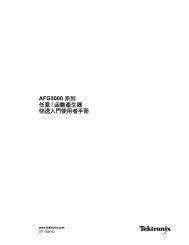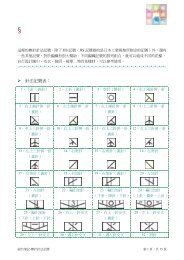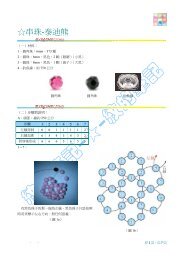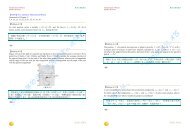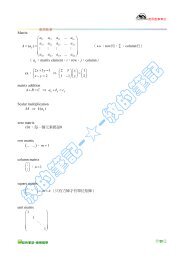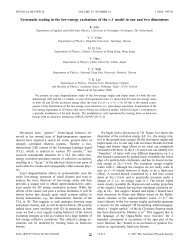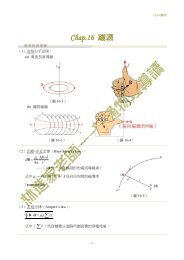Chapter 22 Materials Selection and Design Considerations
Chapter 22 Materials Selection and Design Considerations
Chapter 22 Materials Selection and Design Considerations
Create successful ePaper yourself
Turn your PDF publications into a flip-book with our unique Google optimized e-Paper software.
W88 • <strong>Chapter</strong> <strong>22</strong> / <strong>Materials</strong> <strong>Selection</strong> <strong>and</strong> <strong>Design</strong> <strong>Considerations</strong><br />
selection process involve deciding on the constraints of the problem, <strong>and</strong>, from<br />
these, establishing criteria that can be used in materials selection to maximize<br />
performance.<br />
The component or structural element we have chosen to discuss is a solid cylindrical<br />
shaft that is subjected to a torsional stress. Strength of the shaft will be considered<br />
in detail, <strong>and</strong> criteria will be developed for the maximization of strength<br />
with respect to both minimum material mass <strong>and</strong> minimum cost. Other parameters<br />
<strong>and</strong> properties that may be important in this selection process are also discussed<br />
briefly.<br />
<strong>22</strong>.2 STRENGTH CONSIDERATIONS—<br />
TORSIONALLY STRESSED SHAFT<br />
For this portion of the design problem, we will establish a criterion for selection of<br />
light <strong>and</strong> strong materials for this shaft. It will be assumed that the twisting moment<br />
<strong>and</strong> length of the shaft are specified, whereas the radius (or cross-sectional<br />
area) may be varied. We develop an expression for the mass of material required<br />
in terms of twisting moment, shaft length, <strong>and</strong> density <strong>and</strong> strength of the material.<br />
Using this expression, it will be possible to evaluate the performance–that is, maximize<br />
the strength of this torsionally stressed shaft with respect to mass <strong>and</strong>, in<br />
addition, relative to material cost.<br />
Consider the cylindrical shaft of length L <strong>and</strong> radius r, as shown in Figure <strong>22</strong>.1.<br />
The application of twisting moment (or torque) Mt produces an angle of twist f.<br />
Shear stress t at radius r is defined by the equation<br />
Here, J is the polar moment of inertia, which for a solid cylinder is<br />
Thus,<br />
t � M tr<br />
J<br />
J � pr4<br />
2<br />
t � 2M t<br />
pr 3<br />
(<strong>22</strong>.1)<br />
(<strong>22</strong>.2)<br />
(<strong>22</strong>.3)<br />
A safe design calls for the shaft to be able to sustain some twisting moment without<br />
fracture. In order to establish a materials selection criterion for a light <strong>and</strong> strong<br />
material, we replace the shear stress in Equation <strong>22</strong>.3 with the shear strength of the<br />
material divided by a factor of safety N, as<br />
tf (<strong>22</strong>.4)<br />
N � 2Mt pr 3<br />
tf M t<br />
L<br />
�<br />
r<br />
Figure <strong>22</strong>.1 A solid cylindrical shaft that<br />
experiences an angle of twist f in response to<br />
the application of a twisting moment Mt.



